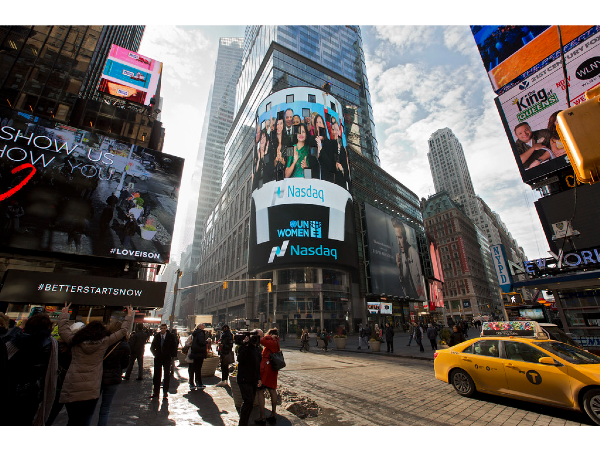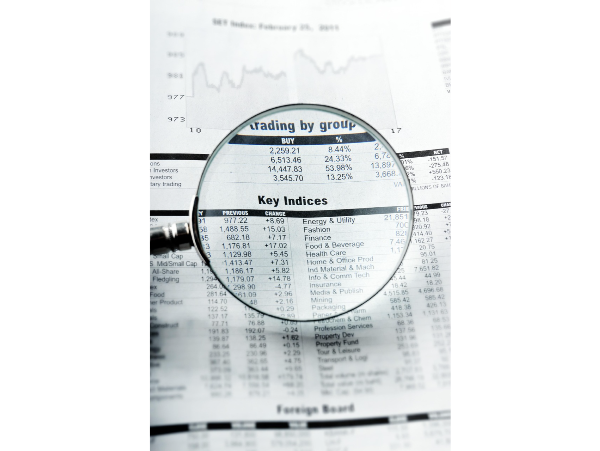Introduction
The global shift toward renewable energy and sustainability is transforming the energy sector at an unprecedented pace. While large-cap companies often capture the spotlight with their massive infrastructure projects and headline-grabbing investments, small-cap energy stocks—those with market capitalizations between $300 million and $2 billion—are emerging as some of the most exciting and overlooked beneficiaries of the green revolution. These nimble companies are driving innovation, filling niche markets, and often achieving faster growth rates than their larger counterparts. For investors seeking both growth and exposure to the future of energy, small-cap stocks can be hidden winners in the ongoing transition to a cleaner, more sustainable world.
Why Small-Cap Energy Stocks Matter in the Green Revolution
- Innovation and Agility
Small-cap energy companies are typically more agile and innovative than industry giants. They are often early adopters of emerging technologies—such as advanced battery storage, hydrogen fuel cells, and smart grid solutions—and can pivot quickly to capitalize on new trends or regulatory changes. Their size allows them to experiment, iterate, and scale successful solutions faster than larger, more bureaucratic organizations.
- Niche Market Leadership
Many small-cap energy firms focus on specialized segments of the market, such as distributed solar, energy efficiency, renewable fuels, or grid modernization. By targeting specific problems or underserved regions, these companies can establish dominant positions and build strong customer relationships, setting the stage for long-term growth.
- Acquisition Potential
As the green revolution accelerates, large energy and technology companies are actively seeking to acquire innovative small-caps to expand their capabilities and product offerings. Acquisitions often come at a premium, providing significant upside for shareholders of the target companies.
- Policy and Regulatory Tailwinds
Governments worldwide are enacting policies to support clean energy, including tax incentives, grants, and mandates for renewable adoption. Small-cap companies that align with these policies can benefit from increased funding, favorable regulations, and accelerated market adoption.
Key Growth Areas for Small-Cap Energy Stocks
- Renewable Power Generation
Small-cap firms are developing and operating solar farms, wind projects, and hydroelectric installations in regions and markets overlooked by larger players. Their ability to secure local permits and adapt to community needs gives them an edge in project development.
- Energy Storage and Battery Technology
The intermittent nature of renewable energy sources makes storage solutions essential. Small-cap innovators are advancing battery chemistries, grid-scale storage systems, and energy management software to enhance grid reliability and enable higher renewable penetration.
- Clean Fuels and Hydrogen
Green hydrogen and renewable natural gas are gaining traction as alternatives to fossil fuels in transportation and heavy industry. Small-cap companies are at the forefront of developing cost-effective production, storage, and distribution technologies.
- Energy Efficiency and Smart Grids
Companies specializing in energy-efficient products, building automation, and smart grid technologies help utilities and businesses reduce consumption and integrate renewables more effectively.
What to Look for in the Best Small-Cap Energy Stocks
● Strong Revenue Growth: Look for companies with a track record of growing sales, especially those expanding into new markets or launching innovative products.
● Technological Edge: Firms with proprietary technology, patents, or unique processes have a competitive advantage.
● Strategic Partnerships: Collaborations with utilities, governments, or larger corporations can accelerate growth and validate the company’s solutions.
● Healthy Balance Sheet: Sufficient cash reserves and manageable debt levels are crucial for funding expansion and weathering market volatility.
● Clear Path to Profitability: While many small-caps prioritize growth, a roadmap to sustainable profits is essential for long-term success.
Examples of Promising Small-Cap Energy Stocks
Eos Energy Enterprises (EOSE)
Eos Energy develops zinc-based battery storage systems for grid-scale renewable integration. Their technology offers a safer and longer-lasting alternative to lithium-ion batteries, addressing a critical need for reliable energy storage as renewables expand.
Website: https://www.eose.com
Array Technologies (ARRY)
Array Technologies provides solar tracking systems that maximize the efficiency of utility-scale solar installations. Their robust, low-maintenance trackers help solar farms generate more power and reduce costs.
Website: https://arraytechinc.com
Clean Energy Fuels Corp. (CLNE)
Clean Energy Fuels is a leader in renewable natural gas (RNG) for transportation, supplying fuel for fleets across North America. Their focus on RNG helps reduce greenhouse gas emissions and supports the transition to cleaner mobility.
Website: https://www.cleanenergyfuels.com
Beam Global (BEEM)
Beam Global designs solar-powered EV charging stations that can be rapidly deployed without grid connections. Their innovative solutions support the growing demand for clean transportation infrastructure.
Website: https://www.beamforall.com
Risks and Considerations
● Volatility: Small-cap stocks are generally more volatile than large-caps, with larger price swings during market corrections.
● Execution Risk: Rapid growth can strain resources and management teams, leading to operational challenges.
● Competition: The clean energy sector is highly competitive and fast-evolving, with constant technological advancements.
● Policy Changes: Shifts in government policy or subsidy programs can impact demand and profitability.
Conclusion
Small-cap energy stocks are hidden winners in the green revolution, offering investors exposure to some of the most innovative and fastest-growing segments of the energy sector. By focusing on companies with strong technology, strategic partnerships, and robust financials, investors can identify the next generation of industry leaders. While risks remain, the rewards for those who conduct thorough research and maintain a long-term perspective can be substantial. As the world accelerates its shift toward clean energy, today’s small-cap innovators could become tomorrow’s market giants—making them a compelling addition to any growth-focused portfolio.































Introduction The global shift toward renewable energy and sustainability is transforming the energy sector at an unprecedented pace. While large-cap companies often capture the spotlight with their massive infrastructure projects and headline-grabbing investments, small-cap energy stocks—those with market capitalizations between $300 million and $2 billion—are emerging as some of the most exciting and overlooked beneficiaries of the green revolution. These nimble companies are driving innovation, filling niche markets, and often achieving faster growth rates than their larger counterparts. For investors seeking both growth and exposure to the future of energy, small-cap stocks can be hidden winners in the ongoing transition to a cleaner, more sustainable world.
Why Small-Cap Energy Stocks Matter in the Green Revolution
Key Growth Areas for Small-Cap Energy Stocks
What to Look for in the Best Small-Cap Energy Stocks ● Strong Revenue Growth: Look for companies with a track record of growing sales, especially those expanding into new markets or launching innovative products. ● Technological Edge: Firms with proprietary technology, patents, or unique processes have a competitive advantage. ● Strategic Partnerships: Collaborations with utilities, governments, or larger corporations can accelerate growth and validate the company’s solutions. ● Healthy Balance Sheet: Sufficient cash reserves and manageable debt levels are crucial for funding expansion and weathering market volatility. ● Clear Path to Profitability: While many small-caps prioritize growth, a roadmap to sustainable profits is essential for long-term success.
Examples of Promising Small-Cap Energy Stocks Eos Energy Enterprises (EOSE) Eos Energy develops zinc-based battery storage systems for grid-scale renewable integration. Their technology offers a safer and longer-lasting alternative to lithium-ion batteries, addressing a critical need for reliable energy storage as renewables expand. Website: https://www.eose.com Array Technologies (ARRY) Array Technologies provides solar tracking systems that maximize the efficiency of utility-scale solar installations. Their robust, low-maintenance trackers help solar farms generate more power and reduce costs. Website: https://arraytechinc.com Clean Energy Fuels Corp. (CLNE) Clean Energy Fuels is a leader in renewable natural gas (RNG) for transportation, supplying fuel for fleets across North America. Their focus on RNG helps reduce greenhouse gas emissions and supports the transition to cleaner mobility. Website: https://www.cleanenergyfuels.com Beam Global (BEEM) Beam Global designs solar-powered EV charging stations that can be rapidly deployed without grid connections. Their innovative solutions support the growing demand for clean transportation infrastructure. Website: https://www.beamforall.com
Risks and Considerations ● Volatility: Small-cap stocks are generally more volatile than large-caps, with larger price swings during market corrections. ● Execution Risk: Rapid growth can strain resources and management teams, leading to operational challenges. ● Competition: The clean energy sector is highly competitive and fast-evolving, with constant technological advancements. ● Policy Changes: Shifts in government policy or subsidy programs can impact demand and profitability.
Conclusion Small-cap energy stocks are hidden winners in the green revolution, offering investors exposure to some of the most innovative and fastest-growing segments of the energy sector. By focusing on companies with strong technology, strategic partnerships, and robust financials, investors can identify the next generation of industry leaders. While risks remain, the rewards for those who conduct thorough research and maintain a long-term perspective can be substantial. As the world accelerates its shift toward clean energy, today’s small-cap innovators could become tomorrow’s market giants—making them a compelling addition to any growth-focused portfolio.